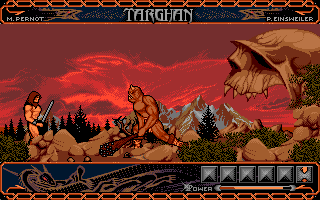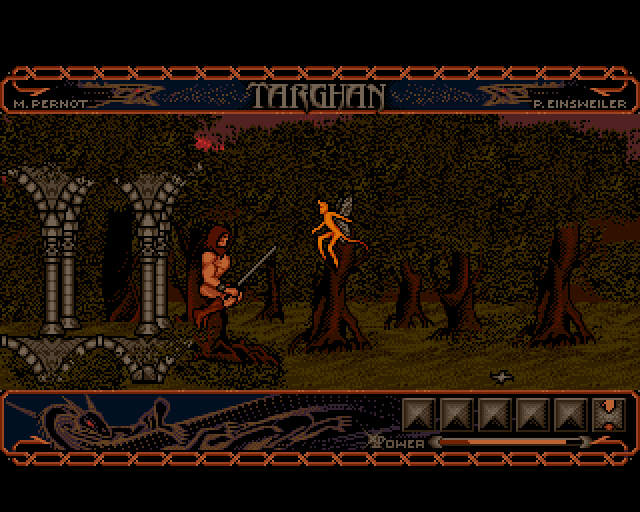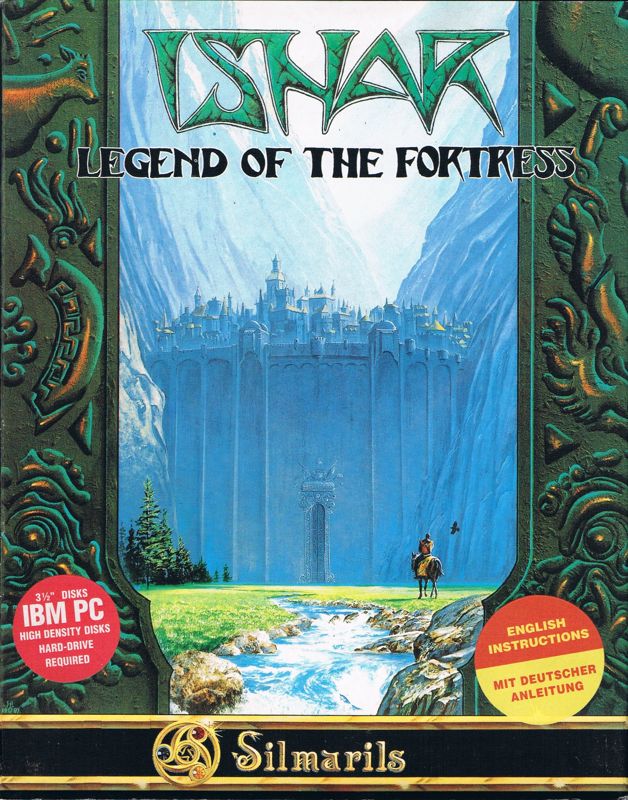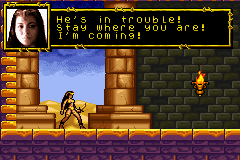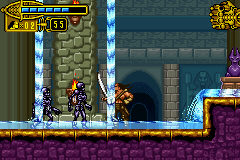Targhan was the creation of Silmarils, a French studio with a knack for visually striking games with lush pixel art. The game's manual includes some backstory about where the hero, Targhan, comes from, stating that he comes from a village called Edengarfin and that he had grown up to be a great chief of his tribe, but that he left because a legend of an "Evil One" with a great secret kept him restless. The game covers Targhan's quest to defeat this evil wizard.
Targhan has the classic sword-and-sorcery hero's uniform: a great, chiseled physique; a long, thick mane of hair; short trunks with a belt; boots; metal wrist bands; a sword; and that's it. He can pick up a maximum of five sub-items like shurikens to use for distance attacks, healing potions, and necessary quest items like keys. He wanders through verdant European forests with deer trotting through the background, to crumbling ruins, to imposing castles. Most of the enemies are humanoids, sometimes rat-headed men and sometimes just men in scary-looking armor. Somewhat at odds with the S&S vibe is that you'll sometimes come up against elf woman archers and in one section you apparently invade a village of dwarves nestled among treetops, killing every guard that gets in your way. It seems the elves and dwarves are as bad as everyone else in this land.
Targhan resembles sideways hack-and-slash games like Rastan but in motion it's quite different. The animation is a bit stiff and the controls seem perhaps influenced by Barbarian's style of holding the fire button while moving the joystick to perform combat moves. When Targhan goes into combat against a humanoid opponent, the fighting is definitely more Barbarian-style, with the opponents hammering at each other until one falls, so it's important to master the timing needed to connect with your swings and hit the enemy before he hits you. Perhaps the creators envisioned a system of thrilling swordfights with impressive attacks and counterattacks, but in practice the most effective technique is generally to just hold the button down and never stop swinging straight ahead. The enemy will try to close in get hit, bounce back, and repeat until dead. For flying enemies like bats, just wait until they descend to attack and then nail them with one swing.
Assuming one gets sufficiently comfortable with the fighting and jumping, the game really becomes a puzzle/adventure game, about knowing which way to go first and which objects to gain to unlock deeper parts of the game. Occasionally Targhan will find scrolls with bits of text that provide hints, but also you just have to work it out through trial and error. For instance, one of the first things necessary is to explore an underground cave system, but obviously you can't see in the dark. The solution is to go back to the surface and wander until you see a small yellow pixie-like creature approaching you. Instead of killing it (which is possible), allow the creature to approach, where it becomes apparent that it's friendly and it begins to follow you. When you return to the caves, it transforms into a floating light source that allows you to navigate the caves without any issue. Like classic adventure games like King's Quest, it's probably helpful to try to map the game out and figure out where all important objects are and the most efficient path to collecting and using them. Then you just have to survive all the fights and vanquish the wizard to get an anticlimactic ending.
Targhan's no hidden gem but it's not a bad game to play as long as one is patient and willing to put up with its shortcomings for the sake of exploring its little fantasy world for a while. Although it didn't spawn any direct sequels, it wasn't the end of Targhan as a video game hero as Silmarils brought him back a couple of years later as a recruitable companion in its RPG, Ishar: Legend of the Fortress. He's classed as a barbarian in that game and is a tough fighter.

